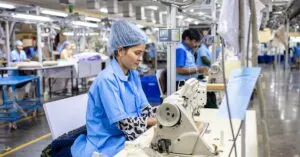Table of Contents
ToggleImagine transforming your wildest ideas into tangible creations right from your desk. Desktop 3D printers have turned this dream into reality, making it possible to bring everything from quirky gadgets to intricate art pieces to life. With a sprinkle of creativity and a dash of tech-savvy, anyone can become a modern-day inventor.
These compact marvels aren’t just for engineers and designers anymore. They’ve become the go-to tools for hobbyists, educators, and even small businesses looking to innovate without breaking the bank. Who knew that with just a few clicks, one could print a miniature version of their cat or a custom coffee mug that screams “I love Mondays”? Welcome to the world of desktop 3D printing, where the only limit is your imagination (and maybe your Wi-Fi connection).
Overview of Desktop 3D Printers
Desktop 3D printers allow users to create physical objects easily, democratizing access to technology for various applications. These machines have broadened horizons for creativity and innovation among diverse groups, making them essential tools for hobbyists, educators, and small businesses.
What is a Desktop 3D Printer?
A desktop 3D printer is a compact device that utilizes additive manufacturing to build three-dimensional objects from digital files. It layers materials like plastic or resin, transforming concepts into tangible items. High precision and ease of use characterize these printers, which typically connect to computers via USB or Wi-Fi. Users often engage with open-source software or proprietary applications to design and modify their creations.
Types of Desktop 3D Printers
Several types of desktop 3D printers cater to different needs and preferences. Fused Deposition Modeling (FDM) printers use thermoplastic filaments, offering affordability and ease of use. Stereolithography (SLA) printers employ resin for high-detail outputs, though they usually come at a higher cost. Digital Light Processing (DLP) printers offer similar advantages to SLA but utilize a fast light source, optimizing speed. Finally, Selective Laser Sintering (SLS) printers use powdered materials, suitable for professional-quality prototypes. These various types enable users to select the best option according to their specific projects and goals.
Key Features to Consider
When selecting a desktop 3D printer, several key features significantly impact performance and usability. Considering these aspects helps users make informed decisions aligned with their specific needs.
Print Quality and Resolution
Print quality directly affects the final appearance of an object’s surface. A printer’s resolution measures the smallest details it can reproduce, typically expressed in microns. Higher resolutions often yield smoother finishes and crisp details, essential for intricate designs. Users should look for printers that offer adjustable resolution settings to balance speed and quality based on project requirements.
Build Volume
Build volume defines the maximum dimensions of an object that a printer can create. Printers vary widely in build size, affecting the scale of projects. A larger build volume enables the creation of bigger items or multiple smaller objects simultaneously. Determining the necessary build volume depends on the intended applications, whether for prototyping or creating larger functional parts.
Materials Compatibility
Materials compatibility plays a crucial role in the versatility of a desktop 3D printer. Different technologies support various materials such as PLA, ABS, PETG, and resin. Considering the types of materials a printer can utilize helps users achieve desired characteristics like strength, flexibility, or temperature resistance. Examining available material profiles ensures users select a printer that aligns with their creative and functional needs.
Popular Desktop 3D Printers on the Market
Several desktop 3D printers are gaining popularity and provide options for users based on their needs. Entry-level models often serve as great starting points for beginners, mid-range options balance performance with affordability, and high-end choices cater to advanced users seeking precision.
Entry-Level Models
Entry-level models appeal to newcomers due to their affordability and user-friendly interfaces. Prusa Mini and Creality Ender 3 stand out for their reliability and community support. Users appreciate the simple assembly process and extensive online resources available for troubleshooting and upgrades. Printing with PLA proves straightforward for most, ensuring a smooth experience as users learn the basics of 3D printing.
Mid-Range Options
Mid-range options offer enhanced features for those seeking a balance between quality and cost. FlashForge Adventure 4 and Anycubic Vyper deliver impressive build quality and print resolution. These printers often include auto bed leveling and larger build volumes, making them suitable for diverse projects. As users explore various materials, such as PETG and TPU, they discover numerous creative applications for their printing efforts.
High-End Choices
High-end choices cater to professional users with demanding requirements. Raise3D Pro2 and Formlabs Form 3 excel in high precision and versatile material compatibility. Each model supports various filament types and resin, allowing for custom applications. Users appreciate the ability to produce intricate designs and detailed prototypes tailored to specific specifications, making these printers a worthwhile investment for serious practitioners.
Advantages of Using Desktop 3D Printers
Desktop 3D printers provide transformative benefits for creators and innovators. They offer a range of advantages that cater to diverse user needs.
Cost-Effectiveness
Cost-effective solutions arise with desktop 3D printers, making them accessible to many. Initial investments for entry-level models can be as low as $200, which appeals to hobbyists and educators. Production expenses drop significantly by allowing users to create custom items at home instead of outsourcing production. Savings on prototyping costs can enhance budget flexibility for small businesses, enabling them to allocate resources effectively. Moreover, the ability to print spare parts reduces dependency on manufacturers, further lowering operational costs for various applications.
Accessibility for Hobbyists and Professionals
Accessibility for hobbyists and professionals expands dramatically with desktop 3D printers. Users can embark on creative projects without specialized engineering skills, thanks to intuitive software interfaces. Diverse models cater to different skill levels, ensuring beginners and experts can find the right fit. Educators utilize these printers to engage students in hands-on learning, fostering creativity in classrooms. Professionals leverage high-end models for precision and material variability in prototypes. Customizable options enhance practicality, enabling individuals to bring unique ideas to life, regardless of their background or experience level.
Conclusion
Desktop 3D printers have revolutionized the way individuals approach creativity and innovation. With their accessibility and versatility, these printers empower users to transform ideas into tangible objects right from their own homes. The variety of models available caters to different skill levels and project requirements, ensuring that everyone can find a suitable option.
As technology continues to advance, the potential for desktop 3D printing will only expand. From hobbyists to educators and small business owners, the ability to create custom items will remain a valuable asset. Embracing this technology can lead to endless possibilities in design and production, making desktop 3D printers an indispensable tool in today’s creative landscape.




